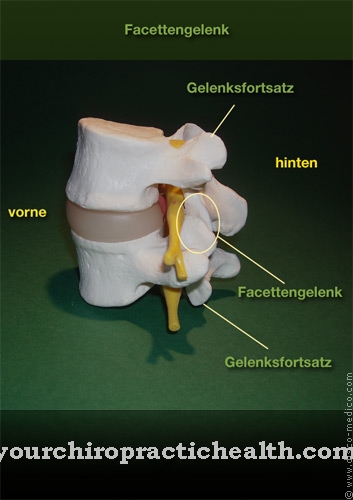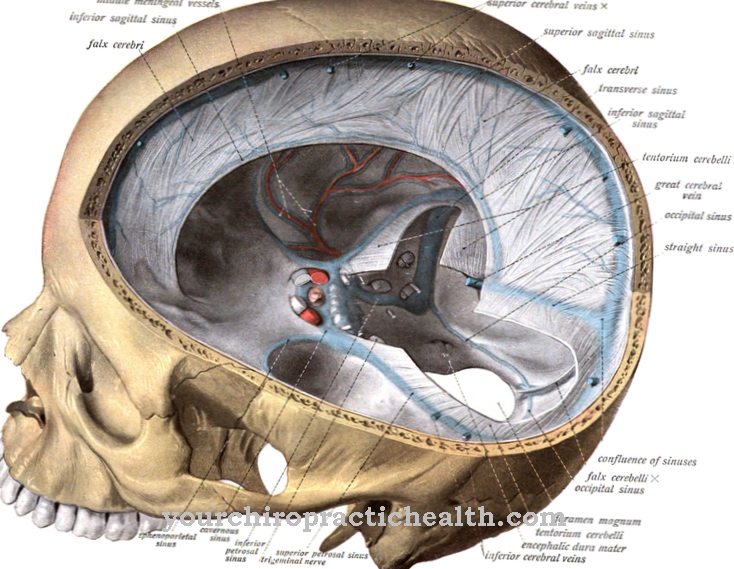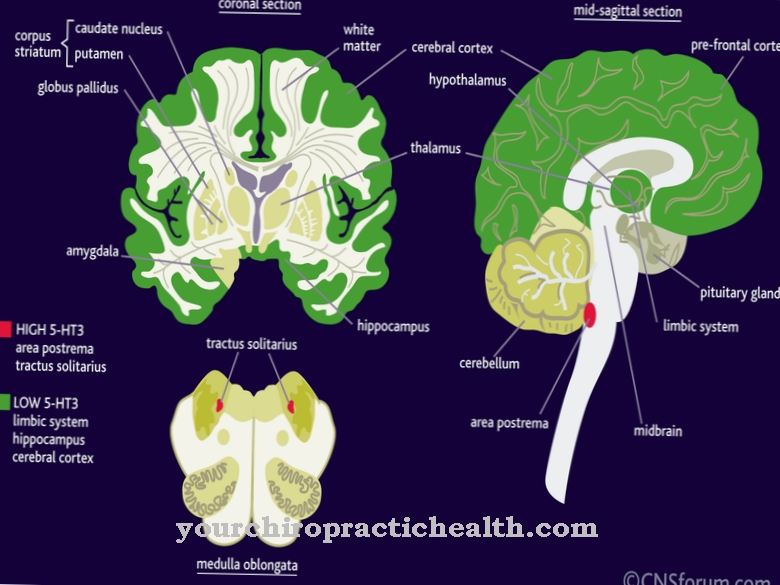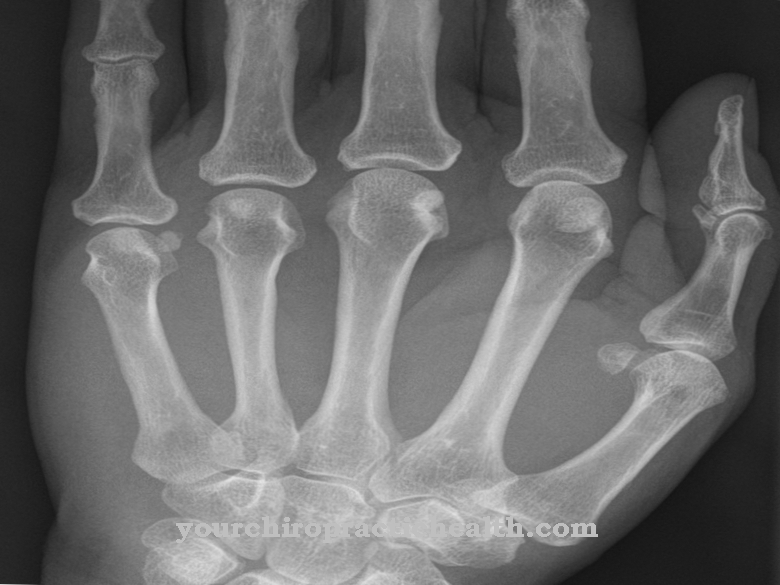Of the Cervical plexus is a network of nerves from the spinal cord that is located in the neck region and is made up of mixed nerve fibers. For example, the plexus is just as involved in the sensitive innervation of the skin as it is in the motor innervation of the diaphragm. Diseases of the plexus are summarized as plexopathies.
What is the cervical plexus?
Medicine understands a plexus to be a fine network of blood vessels or nerve fibers. The cervical plexus is therefore a network of nerve fibers made from branches of the spinal nerves. These are the nerves of the spinal cord.
The cervical plexus contains spinal nerves of the spinal cord segments C1 to C4. In addition, some portions of the C5 segments meet in the plexus. Between the anterior and medius scalenus muscles, the branches of the nerve plexus run down into the deep neck region. Medicine distinguishes sensitive nerve branches from motor nerve branches. The sensitive branches conduct stimulus perception. The motor fibers, on the other hand, reach effectors such as muscles or organs and send movement commands to these effectors from the central nervous system.
The cervical plexus contains both qualities of nerve fibers. Its motor fibers are involved in the innervation of the hyoid muscles, the diaphragm muscles and the neck muscles. The sensitive branches innervate the ear and neck as well as the skin between the collarbone and shoulder. The cervical plexus is a somatic nerve plexus. This type of nerve bundle must be differentiated from vegetative nerve bundles, which usually move along arteries.
Anatomy & structure
From an anatomical point of view, the cervical plexus corresponds to the mixed cervical nerve plexus and thus to an aggregation of fore branches of the first four spinal cord nerves. Its superficial branches correspond to the sensitive parts. The deep parts are motor branches.
The nerve plexus has connections to the trunk, the hypoglossal nerve and the accessory nerve. Its superficially sensitive branches lie on the neck fascia and emerge in a star shape from the posterior edge of the sternocleidomastoid muscle. The most sensitive branches are the minor occipitalis nerve, the auricularis magnus nerve, the transversus colli nerve and the supraclavicular nerve. It also includes the intermediate supraclavicular nerve and the lateral supraclavicular nerve.
The sensitive branches are divided into ascending and descending branches of the central nervous system depending on their course. The motor branches of the plexus include the phrenic nerve, the sternocleidomastoid ramus, the trapezium ramus and the ansa cervicalis, also known as the neck loop. The aggregation of the nerves is network-shaped and corresponds to a storage in fiber composites.
Function & tasks
The tasks of the cervical plexus are the sensory and motor innervation of parts of the neck, chest and face area. The motor innervation of the diaphragm enables the plexus, for example, to move the diaphragm as part of the breathing movement. The nerve plexus also innervates the sternocleidomastoid muscle and the trapezius muscle.
This gives the trapezius muscle of the upper spine and the on-site neck muscle mobility. With the neck loop, the plexus makes the hyoid muscles mobile. The same applies to the muscles in front of the cervical spine, the shoulder blade lifter, the head turner and the stair muscles of the thorax. The movement of the chin-hyoid bone muscle also makes the plexus relevant for the act of swallowing. Movement commands from the central nervous system that cause the muscles to contract or relax are sent to all of the aforementioned muscles via the plexus.
In addition, the cervical plexus supplies the skin behind the ear, the auricle, the adjacent skin areas, the front surface of the neck and the skin below the chin with ascending sensitive branches. Its descending sensitive branches innervate the lower neck region between the shoulder and collarbone. Sensitive nerve branches conduct stimuli such as pain, temperature sensation or muscle tension information into or out of the central nervous system. Due to the agglomeration of the individual nerve branches, there is also a fiber exchange of individual spinal cord nerve segments in the somatic cervical plexus.
Diseases
Diseases of nerve plexuses such as the cervical plexus cause mixed sensory and motor deficits and disorders. Several nerve roots intertwine in the plexus, so that the symptoms of a plexus disease can usually not be traced back to a single nerve.
Motor failures such as muscle weakness, misdirected or failed reflexes, muscle pain, spastic phenomena and / or paralysis can occur, for example, with a disruption of the motor branches in the cervical plexus. Depending on which of the branches are affected, the failure can affect the diaphragm, tongue, neck or chest area. The failures can be associated with abnormal sensations in the skin if the sensitive branches are also affected. Above all, such abnormal sensations include tingling and numbness, for example on the skin between the shoulder and collarbone.
Plexus diseases are also called plexopathies and are usually caused by compression or trauma. Metastatic cancer can also be responsible for cervical plexopathy.The same applies to some metabolic diseases, especially diabetes. In connection with a plexopathy of the cervical plexus, a bilateral failure of the nerve structures supplying the diaphragm is particularly dangerous.
If the motor innervation of the diaphragm is impaired or even fails completely in the plexus on both sides of the body, this results in an elevated diaphragm. The affected patient can no longer breathe deeply due to the elevated diaphragm and therefore has the feeling of breathlessness. The loss of individual nerves from the cervical plexus can also correspond to neuropathy or be caused by another neurogenic disease.



























